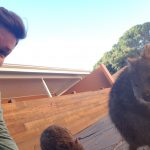What is “aggression” anyway?
Aggression. It’s a pretty emotive term. It feels awful to be told or accused of having an aggressive dog. But what does it mean? It is a term that in my opinion is overused and often used incorrectly. A week out of a seminar with Dr Esther Schalke & Hans Ebbers, I want to share some great points Dr Esther made on aggression to help clarify things.
“Observing aggressive behaviour in a dog does not mean it is a dangerous dog” – Dr Esther Schalke
Aggression (noun) is defined as attack behaviour towards conspecifics (same species) and non-conspecifics (not the same species). It is internal motivation to show aggressive behaviour in a situation of conflict. It is the Fight part of the 4 Fs (fight, flight, freeze, flirt – all behaviour shown in situations of conflict). The purpose is to eliminate the conflict, relieve stress, and perhaps surprisingly increase distance.
Importantly, aggression is not predation. Sometimes called predatory aggression or prey drive, predation is motivated hunting behaviour. The purpose of predatory behaviour is to decrease distance, or the prey escapes. Aggression & predation are even controlled by different areas of the brain (medial hypothalmus and lateral hypothalmus respectively).
All behaviour is influenced by 3 things:
- Genetics – innate behaviours, heritability
- Learning – in critical periods, through experience & ageing
- Environment – specific situation, context & management
There is also research indicating that mother dogs that experience social stress during pregnancy produce puppies that are more sensitive to stress – this adds a layer of innate behaviour not just related to genetics. Then, we also have health conditions that also influence aggression, including hypothyroidism, chronic or acute pain, seizure disorders, metabolic disorders, etc.
Due to these influences, a dog is going to assess things before going into a fight:
- How fit am I?
- How fit is my opponent?
- How important is the resource?
- Advantages & disadvantages
Note, aggression over a resource does not mean the dog is not social; it means it is important to them in that context.
So if you do have an aggressive dog, can anything be done?
We can influence points 3 & 4 in the checklist above to start looking at how we can reduce or prevent aggressive behaviour. We must also correctly classify the aggression into two primary categories: Functional/Offensive or Emotional/Defensive. Treating one like the other will make the behaviour stronger or worse, and we don’t really want that.
- Defensive types can change into offensive if it works for the dog.
- Offensive can look like predation, but remember these have different motivations!
- Anxiety & fear aggression are forms of defensive aggression. Involves genetics, lack of experience, or a bad experience.
- Redirection is from frustration that the desired target can’t be reached. It involves high arousal/emotion, and can be genetic or learned.
- Learned aggression is a learned behaviour strategy, either emotional (classical conditioning) or physiological (operant conditioning).
- Territorial aggression has a strong influence in genetics (such as for livestock guardian dogs). It may not be only related to home, but moves with the dog. Starts in puberty. Must not be confused with other factors like fear.
- Dog-dog aggression, within group, known or unknown dogs. Functional for status/dominance.
Call me, I can help!

 Previous Post
Previous Post
